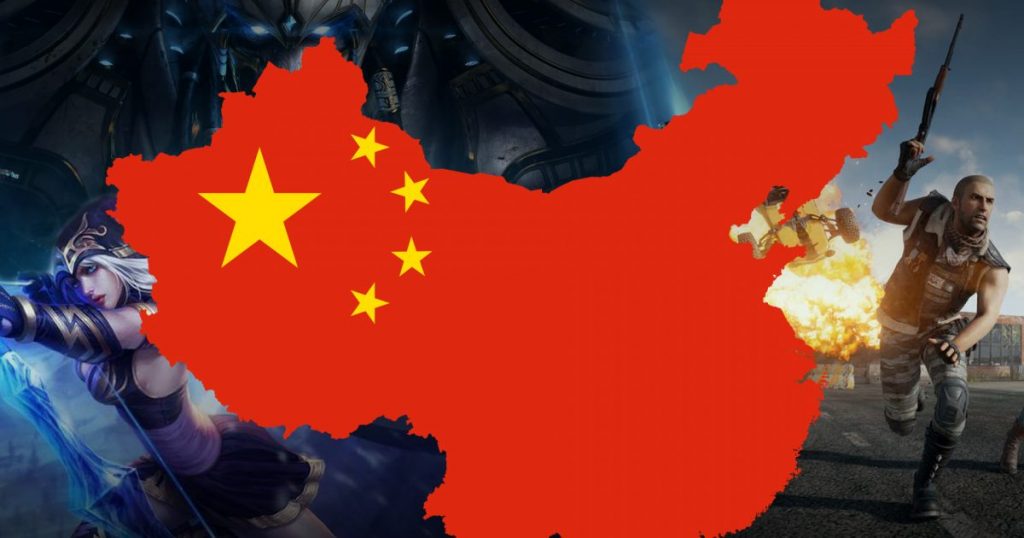Game Localization for China: A Primer
by Ofer Tirosh, CEO, Tomedes
Attention all gaming companies! If you want your game to be a global hit, you need to seriously consider bringing it to China.
Over the past decade, an increasing number of game developers have become interested in localizing their games for a slice of the Chinese gaming market. And it’s no wonder, considering how much of a powerhouse China has become in this field, and how great the benefits for gaming companies could be if they succeed:
• A 2020 report states that there are approximately 720 million gamers in China. This makes it the largest gaming market in the world.
• Revenues from the Chinese gaming market amounted to a staggering 44.3 billion USD, surpassing the United States by a slim margin.
This makes China one of the most lucrative targets for gaming companies looking to branch out into the international market. It is also one of the most challenging, on account of its stringent rules and regulations, as well as Chinese players’ different preferences.
At least for the time being, China is banning online gamers under the age of 18 from playing for more than three hours a week. Minors in China can only play games between 8 p.m. to 9 p.m. on Fridays, weekends and on public holidays starting Sept. 1. There are fewer restrictions for adults.
Are you up for the challenge?
Beyond translation: What is localization?
When entering any new regional market, the mantra every marketer must keep in mind is “Think global but act local.” This means that achieving a wide global reach requires a strategy that is attuned to the specific behaviors and sensibilities of consumers in a particular region.
The core principle that needs to be kept in mind is understanding how people actually use the language. A word-for-word translation of the text is never enough. What matters is the meaning behind the words, and the experience that they are trying to convey. Thus, the context in which this translation occurs is an integral factor, and both context and translation must be suited for each other for the best results.
This also applies in gaming. Game localization is a complex process that goes beyond merely translating in-game text for different regions. It also means a holistic understanding of the relationship between language and game design. In some cases, it may also need specialist knowledge in various domains from auto racing to zoology, and what terms are used in those fields for that particular language. Read here for a more comprehensive breakdown of what game localization entails.
Challenges in game localization for China
China isn’t the easiest market to plan a localization strategy for, however. There are a number of issues that game companies need to watch out for, and when it comes to China these three are the most significant:
- Developing language assets. This is the first and most obvious challenge in localizing a game for China. There are a number of technical and cultural issues that need to be considered here.
Simplified Chinese, which is preferred in Mainland China, contains over 8000 characters, which can lead to a number of technical problems. If it isn’t done right, these characters can take up a lot of memory. Written Chinese also tends to be shorter than their English translations, so the game’s UI and layout design need to account for that as well.
Aside from Simplified Chinese, there is also Traditional Chinese, which is preferred in Hong Kong and Taiwan. There are differences in the way the language is used in different regions, which can be a touchy subject due to political tensions among them. It is important to make sure that localization efforts tread the line when it comes to these divides. - Finding a local partner. Foreign game developers need to partner with a Chinese company to enter the market. For example, Nintendo and Square Enix both partner with Tencent, the biggest game publisher in China. Blizzard games are published with NetEase. Without a local partner, foreign game developers cannot be granted a publishing license.
- Regulatory compliance. This is perhaps the biggest challenge. China’s Ministry of Culture exercises heavy oversight in enforcing national regulations when it comes to video games. This includes strict censorship of any content related to nudity, death, or politics. Failure to comply can result in revocation of the game’s license.
These regulations are always being updated, so it is important for game publishers to keep abreast of these changes. One thing to note: mainland regulations were recently tightened as regards the use of text. Now all text must purely be in Simplified Chinese.
After all this, game publishers will have to wait for approval from the governing body. This is a process that takes at least 80 days. There is a limited number of games that are approved each year, so the wait could be delayed even further.
Best practices in Chinese game localization
Culturalization
Dealing with all these challenges comes down to nothing if the game fails to catch Chinese gamers’ interest. A game must resonate with the player on a personal level, and simply translating the text is often not enough to achieve that effect. China is a country steeped in culture and colorful traditions of its own. The cultural divide between it and the West is a wide one.
Thus it is important to make the game more relatable to a Chinese audience. Some examples include:
• Changing Western pop culture references to Chinese ones
• Using Chinese dialects to denote regional differences
• Adding special DLC featuring Chinese history or myths
In some cases, entire storylines can get completely overhauled in order to cater to the Chinese audience. Depending on the level of revision, it can be a laborious process, but it is a worthwhile investment to make Chinese gamers feel that the game was made for them.
Promos & Events
Part of the localization process is determining what kind of marketing strategy works for a given population. One surefire way to catch Chinese gamers’ interest is through in-game promos and events. Unlike in the West, monetization is not as frowned upon, and the majority of players are willing to make in-game purchases. Limited-time discounts or exclusive content are a sure way to maintain a loyal Chinese player base.
Quick turnaround
In the globalized economy, game developers are now expected to be capable of launching games through simultaneous release around the world. This often requires a dedicated localization team capable of translating manuals, marketing material, and in-game text into many different languages.
Depending on how large the project is, ensuring quality and consistency within a tight deadline can be an issue. One thing that can make the process easier is having a localization team composed of native Chinese speakers. Not only will this make for better translations, it will also expedite the quality assurance process.
Considering the linguistic and regulatory challenges posed by China, it is highly recommended that localization be a key part of a game’s development strategy from the start. Which brings us to the last point—
High-quality translation
At the heart of it, everything goes back to the need for high quality translation. As previously mentioned, a word-for-word translation can result in the loss of nuances at best. It can also become utterly incomprehensible at its worst.
It can be very costly to assemble a good localization team, which is why many game developers choose to partner with a professional translation agency instead. These companies provide much-needed expertise in terms of providing high quality translations.
Bigger translation agencies are also able to provide full game localization services, lessening the strain on a gaming company’s workforce and budget.
BONUS: Porting to mobile
A large majority of gamers in China play on their phones. This means that mobile ports can reach a wide segment of the Chinese gaming population. Square Enix, for example, has ported most of its legacy catalogue to mobile. Another example is PlayerUnknown’s Battlegrounds, which made a mobile version to enter the Chinese market.
Another bonus: Console games can also provide a freshly lucrative opportunity. In 2015, a longstanding ban on consoles was lifted, which means game publishers are scrambling to get a slice of this growing market.
Changing the Game
The fast growth of the Chinese gaming market is, so to speak, a game-changer. Gaming companies would do well to pay attention—localizing a game for China can be a daunting task, but keep all these things in mind and you’re well on your way to bringing your game to a whole new level.
Ofer Tirosh is the CEO of Tomedes Translation Services with over a decade of experience in providing localization solutions for the gaming industry, among other industries, for 95,000+ clients. Their Seattle office is reachable online.























